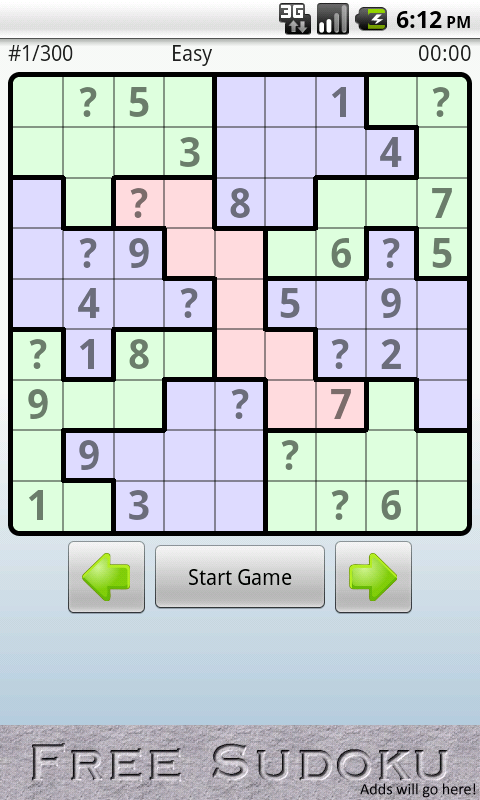

The app includes around 10,000 individual sudoku puzzles that can be played for free, although you can pay a one-time fee of $5 to remove ads.Īvailable for Android and iOS, Brainium’s Sudoku offers a highly accessible and straightforward way to play sudoku puzzles in digital form. There is also a wealth of statistical features, letting you track your progress, see your best times, and keep a tab on all of your achievements. Players may also welcome several features that can be called upon to make the game a little more forgiving, including hints, auto-checking, and duplicate highlighting. It also provides a variety of daily challenges and seasonal events, giving the app much more depth than you’d expect from a supposedly simple sudoku app. It lets you play standard games of sudoku, enabling you to change the difficulty setting so that you can have a gentle ride or a more taxing test. offers arguably the most comprehensive sudoku app out there. Looking for apps that let you play something other than sudoku? Check out our list of the best chess apps or our list of the best puzzle games of all time. Still, while half a dozen or so apps with the same name might ordinarily be a recipe for severe confusion, we’ve clearly indicated the name of the developer to help you tell them apart. By throwing in extra game modes and activities, the apps we’ve covered below take sudoku to a whole new level, helping you to squeeze even more enjoyment out of one of your favorite ways to unwind and train your brain.Īlso, we’re going to apologize right now for the fact that most of these apps are called “sudoku” rather than something more imaginative. In fact, the best sudoku apps do more than simply replace paper-based sudoku with a virtual equivalent. This is our goal with Empirical Modelling. For safety-critical systems (such as railway management) it is literally a matter of life and death that we learn to use computers in ways that integrate smoothly with human perception, communication and action. Even in something so simple as a Sudoku puzzle humans use a mixture of perception, expectation, experience and logic that is just incompatible with the way a computer program would typically solve the puzzle. "Traditional computer programs are best-suited for tasks that are so well-understood they can, without much loss, be expressed in a closed, mechanical form in which all interactions or changes are ‘pre-planned’. This has shown that there were systemic problems arising from the introduction of the new technology.ĭr Steve Russ of the Empirical Modelling group at the University of Warwick said: Reports at the time sought to blame various railway personnel but by applying Empirical Modelling the researchers have created an environment in which experimenters can replay the roles of the drivers, signalmen and other personnel involved. Previously the researchers have been able to use their principles to analyse a railway accident in the Clayton Tunnel near Brighton when the telegraph was introduced in 1861. The interaction between the shifting colour squares and the logical deductions of the Sudoku puzzle solver is a good illustration of the unusual quality of this "Empirical Modelling" approach. It is of particular relevance for artificial intelligence, computer graphics, and educational technology. The interplay between logic and perception, as it relates to interactions between computers and humans is viewed as key to the building of better software. The method can be applied to other creative problems and he is exploring how this experimental modelling technique can be used in educational technology and learning. For doctoral researcher Antony Harfield it is a way of exploring how logic and perception interact using a radical approach to computing called Empirical Modelling. However the colour Sudoku is more than just a game to the University of Warwick Computer Scientists. Sudoku players can test this for themselves at: (NB page requires Flash 9) Players also can gain additional clues by changing the colour assigned to the each digit and watching the unfolding changes in the pattern of colours. If a black square is encountered then a mistake has been made. More usefully an empty square that has the same colour as a completed square must contain the same digit. This gives players major clues as darker coloured empty squares imply fewer number possibilities. The empty square's colour is the combination of the colours assigned to each possible digit. Empty squares are coloured according to which digits are possible for that square taking account of all current entries in the square's row, column and region. Squares containing a digit are coloured according to the digit's colour. The colour Sudoku adds another dimension to solving the puzzle by assigning a colour to each digit.


 0 kommentar(er)
0 kommentar(er)
